Western Shores Sample Rules — Second Revision
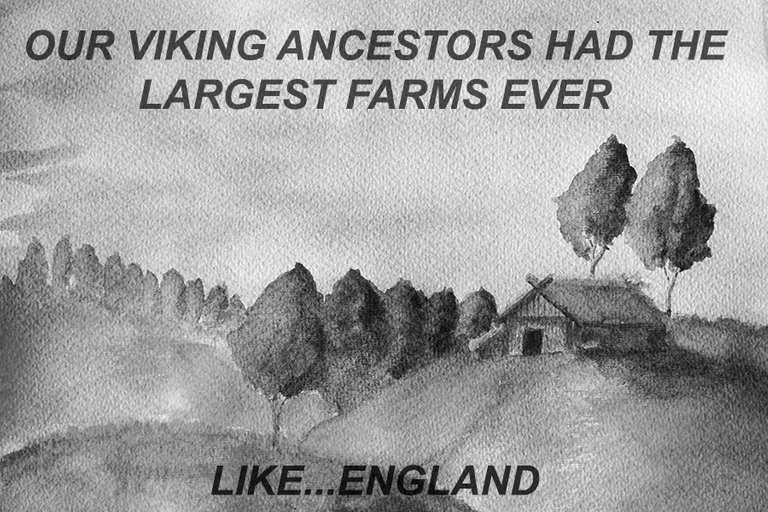
Well, yeah, there are farms and there are...farms.
"All your base are belong to us!" All art used, also.
Greetings, everyone!
As you might know, I am building this card game with a working title Western Shores. I've shown some of the concept artworks, most of them done by @silver.art and some by me. Like this little farmie above. You can find the colored version linked near the bottom of this article.
Today, I want to show you the second revision of the game rules which are only slightly incomplete. Sure it needs editing. Also, concept changes will probably occur.
But it is enough for the game to be playtested. I send these along with another document, containing the far from complete versions of the cards to a friend of mine. Waiting for feedback any week now ;)
What I'd love to know is — is it clear enough for you the way I explained things so far?
Game Guide:
Concept:
You are a Viking leader looking for glory! This you gain by exploring the unknown, expanding your map, building your infrastructure, braving the natural hazards, defeating creatures of myth or reality...And by sending more of your followers to Valhalla.
Game Setup:
Shuffle the 99 Draft Deck cards and put them where it will be easy for the players to draw and reveal up to 9 cards at the beginning of each round.
Shuffle the 9 Greed Deck cards and put them where it will be easy for the players to draw cards on their turns.
Each player takes 3 Warrior cards, 3 Worker cards, 2 Lumber Mill cards, and 1 Farm card from the starter pack. The players shuffle those cards which are now their own starting players’ decks. Cards from the Draft Deck.
Each player draws a starting hand of 5 cards from their own players’ decks.
Determine where the rest of the game areas will be.
The first player on the first turn of the game is the person who read or heard a tale of glorious deeds most recently. Then players rotate to the left.
Start the game.
Game Areas:
The Draft Deck — The pile from which cards are revealed during the Draft Phase
The Not Drafted Pile — The pile where you put all the cards that remain unpicked after the draft phase.
The Greed Deck — The pile from which the players draw greed cards when they choose to get access to more of their own decks on their turns.
Players’ Decks — Players have their own decks that are built and moderated over time as the game progresses. They each start with the same 9 cards but they draft different ones, place some of them as tiles on their maps or get some of them out of the game by using the Ascend ability of other cards.
Players’ Discard Piles — Where cards discarded for resources, newly drafted cards, cards discarded at the End Of Turn Phase, or due to effects causing you to discard any tile.
Players’ Hands — The cards that players draw from their own decks at the end of their turns and which they hold hidden from their opponents until they play or discard them on their own turns.
Players’ Maps — Only the first tile you play in the game can stand alone. All other tiles should be connected to your other existing tiles on your map (which can stretch no more than 6x6 tiles, horizontally and vertically), i.e. touching another card with the proper terrain.
Water edges can only be connected to water edges, land edges — to land edges. There are tiles (i.e. cards on the map) that have both water and land edges. They are on the shore and they allow you to connect your land areas to water. If you want to place another tile on the left or right of such a tile, the bottom and top edge of the new tile must correspond to the bottom and top edge of the previous tile.
There are exceptions to this rule and those are the rune cards that can be attached horizontally to any other card and any card can be horizontally attached to them. Only, in some cases that will bring no other bonus than connectivity.
Tiles are considered Protected in they have at least two adjacent tiles on your map. If they have only one adjacent tile or if they stand alone, they are Unprotected and opponents can force you to discard them by playing some of their aggressive cards.
Players’ Greed Stacks — The zone you keep the greed cards you have drawn face-down and without looking at them until it’s time to reveal and resolve them.
The Valhalla Stack — Where Ascended characters go. Those can be Warrior cards, Worker cards, and cards with the Hero type, A.K.A. Heroes.
Card Anatomy:
Tile Border — Determines if and where the card can be placed as a tile. Starter cards have a different border. Lumber Mills and Farms Have all-land borders. Some tiles have water-only borders. Some tiles have land-only borders. Some tiles have water-land or land-water borders. Rune tiles have golden borders. They can be attached to any other tile on your map but only horizontally and provided you have the space to do so.
Name — The name of the card/tile. Some rules may refer to it. Some cards are unique. And there are up to 4 copies of the other cards in the game.
Type — In terms of their place on the map, cards that can be placed as tiles have the Water or Land type. Some have both the Land and the Water-type. All those are in addition to their other types.
There are cards that can only stay in your deck, hand and discard pile, until Ascended and removed from the game. They cannot be placed as tiles. Those are the Worker cards and Warrior cards from your starting player’s deck, as well as the cards with the Hero type.
Greed cards are drawn from a separate deck and they do not enter your deck, hand, map, or discard pile.
Among the cards that you can place as tiles on your map, there are the Beast, Myth, Shore, Harbor, Ship, (not yet done)
Glory — The Points you score in the game by Ascending, (not yet done, so test with half the total cost, rounded down)
Artwork — (not yet done)
Cost — The number and type of resources you have to exhaust on your turn in order to place the card as a tile on your map.
Produce/Discard Bonus — Except for your Worker and Warrior starter cards and all cards with the Hero type, other cards that give you resources can be triggered either when you discard them as the above mentioned (Discard), or once per turn while they are placed as tiles on your map (Produce Bonus).
Play Bonus — Happens immediately on the turn you place the card as a tile on your map.
Passive Bonus — Affects other instances of the game at all times the card is a tile on any map.
End of Turn Bonus — Some card do something at the end of each turn after they have been placed as tiles.
Flavor Text — It’s just sitting there, spreading wisdom across the world.
Artist Reference — The name of the author of the artwork.
Turn Order:
Draft Phase (All players participate in it at the beginning of the round) — Draft new cards and put them into your discard pile. They will later be shuffled into your own deck of cards.
Twice the number of the players + 1 cards are revealed from the draft deck at the beginning of each round.
The player with the least glory points this round is player 1. If there’s a tie for the least glory points, the player with the least tiles place on his or her map gets the advantage of making the first pick. Another tiebreaker is the greatest number of greed cards currently possessed by the player. If any tie still exists, resolve it at random.
For the rest of the round, player 2 is the one on the left of player 1. Player 3 is the one on the left of player 2, Player 4 is the one on the left of player 3.
Player 1 makes the first pick, then player 2 makes one pick, then player 3, then player 4. Then player 4 again makes a second pick, then player 3, then player 2, then player 1. Thus, 8 cards out of 9 revealed are picked, the last one is discarded in a separate pile next to the draft deck.
If there are 3 players in the game, 7 cards are revealed, and they are picked in player order 1, 2, 3, 3, 2, 1. The remaining card is discarded.
If there are 2 players in the game, 5 cards are revealed, and they are picked in player order 1, 2, 2, 1. The remaining card is discarded.
Then the players take their turns in the same order that they drafted in this round.
Greed Phase — after refilling your hand to 5 cards, you may choose to be greedy up to three times per turn and draw one additional card from your deck.
For each additional card you choose to draw, though, you draw one card from the greed deck. You do not look at it and you keep it face-down on your greed stack. When all nine cards from the greed deck are drawn, regardless of which player drew the last one, all greed cards are revealed, their effects are resolved immediately (next turn effects happen on the next turn of the player who revealed a card with such an effect). Then all greed cards are shuffled together to form the new greed deck.
Exploration phase — Place cards from your hand as tiles on your map.
To do so you need to cover their cost by discarding other cards for resources (see Discard Bonus) and/or using the resources the other tiles on your map provide (see Produce Bonus).
Tiles provide their produce bonus each turn they are on the map, even on the turn, they were placed. So you can sometimes play more than one tile per turn. The same is true for any other abilities they might give you.
At the end of the game, each tile on your map scores the glory points shown in the top right corner. Some tiles provide glory each turn. Those are the legendary lands, ships, hazards, and creatures.
End Of Turn Phase — Put all cards from your hand that you did not play this turn on your discard pile. Effects that last until the end of the turn ware away. You score glory from tiles that provide it during this phase, i.e. most of the legendary tiles. Draw a new hand of five cards from your deck. If there are no cards left in your deck, shuffle your discard pile and form a new deck, then proceed until there are five cards in your hand. Pass the turn to the player on your left unless you are the last one to play this round.
Ascending A Character:
Most legendary cards have the Ascend mechanic which means you must remove a Worker, Warrior or Hero card from your hand or discard pile and place it on the Valhalla stack. If you have such a card neither in your hand nor on your discard pile, then you cannot place the card with the Ascend ability on your map.
Don’t worry about those characters. They want to ascend to Valhalla. They want it so bad that they give you the glory points written in their top right corner at the end of the game if they are on your Valhalla Stack. If they are still in your deck, they take those glory points from your total, instead.
Game End:
The Game’s End is triggered when a player has 16 tiles placed on one’s own map or when the draft deck contains fewer cards than the necessary count for a regular draft phase, i.e. twice the number of players + 1.
Shuffle the cards from the Not Drafted pile. They become the draft deck for one final round. Reveal the proper number of cards for your players' count, then remove the rest. Proceed as a normal round would.
Call this the Ragnarok round if you will. When it’s over, it’s over.
Final Scoring:
Sum the glory points on all tiles on your map, add the points of the characters on your Valhalla Stack, subtract the points of the characters still in your deck or discard pile, and add all the glory points that you scored during the game. This is how glorious your game was!
Good luck and have fun!
This is it for the time being. I'm taking the opportunity to invite people from the PowerHouseCreatives community to also check the Worldbuilding community. I'm tagging a few people who might be interested in this, like @wwwiebe, @bengy, and @worldbuilder. You have experience in such stuff. I would also like, though, to know the thoughts of all other interested people, even those with no experience in games, since I want to know how understandable all this is.
If you are interested in other arts concerning the same project you may have a look at:
Concept Art For Western Shores #5 — A Farm. You Always Need One

Concept Art For Our Future Western Shores Game
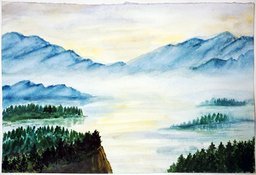
Concept Art For Our Future Western Shores Game #2 — Not Good Enough Yet
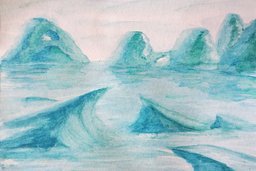
Concept Art For Our Future Western Shores Game #3 — Another Version
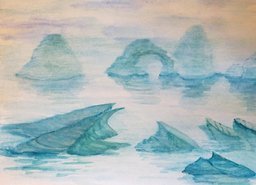
Concept Art For Western Shores #4 — Learning Next Level Icebergs
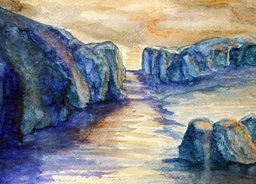
Blue Mood — Terrible Job — A 240 Characters Zapfic Story
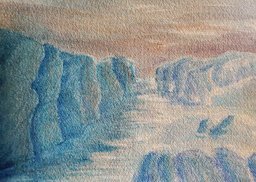
And some pieces published by @silver.art

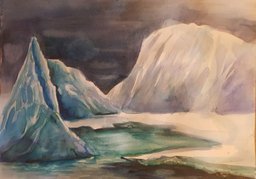

And the other

Thank you for being with us!
Yours,
Manol

Congratulations! Your post has been selected as a daily Steemit truffle! It is listed on rank 5 of all contributions awarded today. You can find the TOP DAILY TRUFFLE PICKS HERE.
I upvoted your contribution because to my mind your post is at least 3 SBD worth and should receive 167 votes. It's now up to the lovely Steemit community to make this come true.
I am
TrufflePig, an Artificial Intelligence Bot that helps minnows and content curators using Machine Learning. If you are curious how I select content, you can find an explanation here!Have a nice day and sincerely yours,

TrufflePigMy first thought was that this should read "The first player on the first turn of the game is the person who performed a glorious deed most recently." Make it personal!
And I loved the opening graphic. "Like... England." Yeah. 😂
Okay, my thoughts. I was able to follow the game play and the rules: pick up cards, play cards in order, be greedy, suffer the consequences (because that has been at least a small part of human history). No problem. I think I would enjoy playing it!
But...
I'm a visual person. I had to read the instructions a couple times to try to visualise the game; I would have personally preferred to see visual examples of the cards. It would have helped me to learn the game a little quicker.
Second thought is that people as a whole have a pretty short attention span, and if you could find a way to compress the instructions into more easy-to-chew bites that'd be helpful. For what it's worth (and it may be worth nothing), I've personally tried to reduce the rules to my game to the size of the cards that will be used:
(Yes, I still have written instructions, but these are for people who wont' read them)
I still think it's awesome you're doing the art for it!
Thanks a bunch...of bearskins!
I do plan to compress the rules. Also, I do have all the content of this version of the cards put in tables...but they are far from the real card design that should be. The card design is only about 80% clear so far.
I agree about that personal part. Awesome idea!